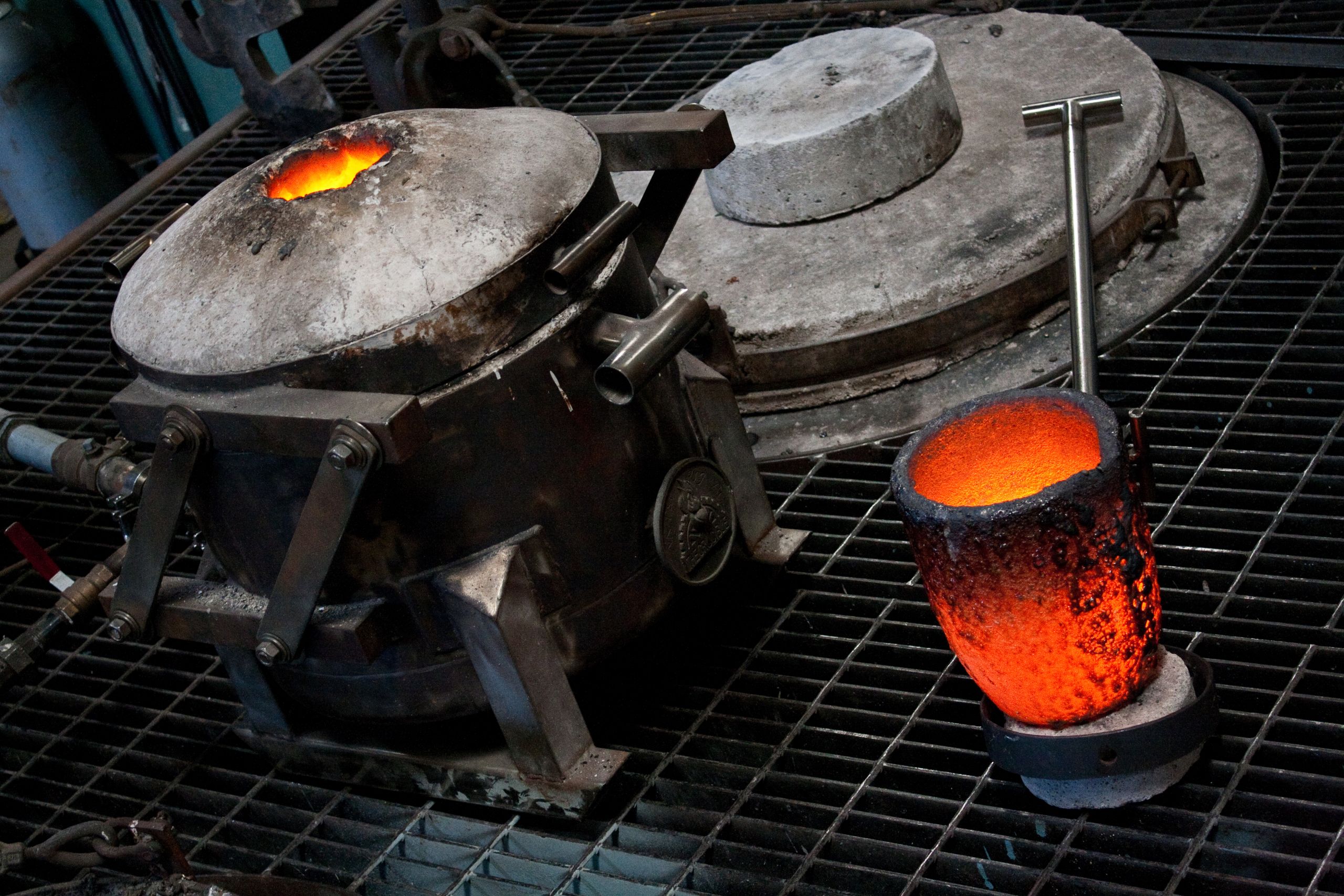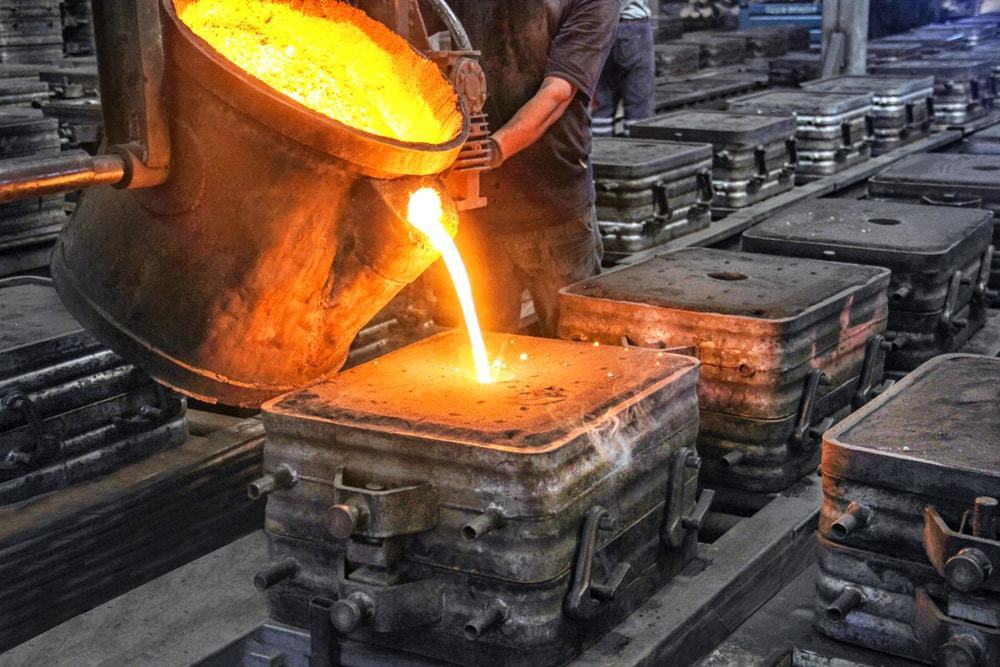Recognizing the Steel Castings Refine: A Comprehensive Guide for Beginners
The Metal Casting procedure is an essential technique in manufacturing that transforms molten metal right into solid types. Newbies need to understand the different approaches included, such as sand spreading and pass away casting. Recognizing the products, style concepts, and safety and security actions is similarly vital. Each aspect plays a crucial role in achieving successful end results. As one browses these details, the concern of just how to maximize each step for enhanced outcomes ends up being significantly essential.
The Basics of Steel Casting
Metal Casting has actually advanced over centuries, its essential concepts stay constant and essential to the manufacturing process. At its core, Metal Casting entails the change of liquified steel into solid things through different techniques. The procedure starts with the production of a mold and mildew, which specifies the shape of the end product. When the mold is prepared, metal is heated up to its melting factor and poured right into the tooth cavity. After cooling, the metal strengthens, taking the form of the mold.
There are several casting approaches, consisting of sand spreading, investment casting, and die spreading, each with distinct advantages and applications. The choice of technique relies on elements such as manufacturing volume, material type, and desired precision. When cast, the end product might undertake additional procedures like machining or surface therapy to achieve the called for surface and requirements. Recognizing these fundamentals is necessary for anybody thinking about the field of Metal Casting.

Understanding Materials Used in Steel Casting
Materials play a crucial function in the Metal Casting procedure, influencing the end product's residential or commercial properties and performance. Numerous steels are utilized, consisting of light weight aluminum, steel, iron, and bronze, each offering distinct features matched for details applications. Aluminum is light-weight and corrosion-resistant, making it optimal for automotive components. Iron, especially cast iron, is preferred for its outstanding wear resistance and longevity. Steel gives high toughness and versatility, often made use of in heavy machinery elements. Bronze, known for its deterioration resistance and machinability, is generally employed in aquatic applications.
Along with the metals, various casting materials, such as sand, plaster, and ceramic, are made use of to produce mold and mildews. Sand spreading, the most widespread method, uses silica sand as a result of its thermal stability and capacity to create detailed shapes. Plaster and ceramic molds use finer information however might require even more intricate procedures. The option of products straight affects the performance, price, and top quality of the casting procedure.
The Layout Process: From Concept to Blueprint
The layout procedure in Metal Casting begins with the initial concept growth, where concepts are generated and examined. This is followed by the application of CAD modeling methods, permitting precise visualizations of the style. The blueprint completion actions assure that all specs are accurately recorded for manufacturing.
Initial Idea Development
Preliminary principle advancement marks a vital phase in the Metal Casting procedure, where ideas change into substantial layouts. During this phase, designers team up with designers and stakeholders to brainstorm and improve first concepts. They consider factors such as capability, aesthetics, and manufacturability, making sure that the layout meets the required specifications and efficiency criteria. Illustrations and outlines are created to imagine the ideas, enabling preliminary assessments of usefulness and cost-effectiveness. This stage also entails recognizing products and prospective casting techniques that align with the design goals. Inevitably, initial idea growth prepares for a comprehensive blueprint, leading the succeeding stages of the spreading process and ensuring a successful change from principle to truth.
CAD Modeling Techniques
Transforming concepts right into precise styles, CAD modeling methods play a crucial role in the Metal Casting process. These techniques use innovative software application to create detailed three-dimensional versions that accurately mirror the designated product. By employing tools such as parametric modeling, solid modeling, and surface modeling, designers can control dimensions and forms easily. CAD systems also help with simulation and analysis, permitting the identification of potential flaws prior to manufacturing starts. This positive technique decreases product waste and maximizes the layout for manufacturability. Furthermore, CAD designs can be quickly customized, making it possible for fast versions based upon responses. Basically, CAD modeling serves as the backbone of the layout process, bridging the gap between first concepts and the eventual production-ready styles.
Plan Finalization Tips
Complying with the creation of comprehensive CAD versions, the following stage entails plan completion, which is essential in converting electronic styles into actionable prepare for manufacturing. This process begins with examining the CAD versions for accuracy and compliance with requirements. Once validated, the measurements, tolerances, and product specs are carefully detailed to assure clearness. Integrating annotations and notes assists connect important details relating to spreading procedures, surface coatings, and assembly requirements. The completed blueprint undertakes an extensive authorization process, commonly entailing collaboration with engineers and production teams to deal with any type of possible issues. Modifications are made and approvals acquired, the blueprint is formally launched, offering as the fundamental file for the succeeding stages of Metal Casting, including pattern production and mold style.
The Metal Casting Strategies Clarified

Metal Casting methods incorporate a variety of techniques utilized to form liquified metal into desired types. These techniques vary according to the sort of material, complexity of the style, and production quantity. Sand casting is among one of the most usual approaches, including the development of a mold from sand to hold the liquified metal. Financial investment casting, or lost-wax spreading, enables elaborate styles by making use of a wax pattern that is disappeared. Pass away casting employs high-pressure injection of liquified metal right into a mold and mildew, suitable for mass production. Other techniques include irreversible mold spreading, which utilizes reusable molds, and centrifugal casting, where rotational pressures assist in loading the mold. Each method has its applications and benefits, making it vital for makers to select the proper approach based upon their particular demands and needs. Recognizing these techniques is important for anyone associated with the Metal Casting procedure.
Finishing Procedures: Enhancing Your Casted Product

Completing procedures play an important role in boosting the high quality and appearance of casted items. Numerous surface therapy techniques, such as polishing and covering, are employed to enhance sturdiness and aesthetics. Additionally, quality inspection approaches guarantee that the end product fulfills specified requirements and performance demands.
Surface Therapy Methods
A selection of surface treatment strategies play a necessary role in enhancing the top quality and long life of casted products. These methods include techniques such as shot blasting, brightening, and covering. Shot blowing up efficiently eliminates surface flaws, improving the aesthetic and functional attributes of the spreading. Polishing supplies a smooth coating, which is specifically important for ornamental applications and components requiring marginal friction. Finishing methods, such as electroplating or powder finishing, offer extra security versus rust and wear, making sure resilience. Surface therapies visit here can enhance adhesion for succeeding processes, such as paint or bonding. By using these methods, makers can attain premium surface area quality, which is important for the performance and life expectancy of Metal Casting in numerous applications.
Quality Evaluation Techniques
Effective quality assessment approaches are vital for assuring the stability and efficiency of casted items after the completing processes. Various strategies are employed to evaluate the quality of Metal Casting, consisting of visual examination, dimensional checks, and non-destructive screening (NDT) Visual assessment permits the identification of surface flaws, while dimensional checks guarantee that products satisfy defined resistances. NDT methods, such as ultrasonic screening and radiographic inspection, give deeper insights into inner integrity without damaging the castings. Furthermore, mechanical testing, such as tensile and firmness examinations, evaluates material residential or commercial properties - Metal Castings. By utilizing a combination of these methods, manufacturers can improve product high quality and dependability, ultimately resulting in higher consumer fulfillment and decreased manufacturing expenses
Security Considerations in Metal Casting
While the Metal Casting process supplies countless advantages, try this website it likewise presents a series of security risks that must be carefully taken care of. Workers in casting facilities are revealed to high temperatures, liquified metals, and hazardous materials, which can lead to serious injuries if correct preventative measures are not taken. Individual safety equipment (PPE) such as heat-resistant handwear covers, encounter shields, and safety garments is essential to lessen risks.
In addition, the visibility of fumes and dust necessitates appropriate air flow systems to ensure air high quality - Metal Castings. Normal training on safety methods is essential for all workers to acknowledge possible threats and respond efficiently. Emergency situation procedures need to be established, consisting of fire precaution and emergency treatment schedule. Upkeep of tools and correct handling of materials additionally add to a safer working environment. By prioritizing these security considerations, Metal Casting procedures can protect their labor force and preserve effective manufacturing procedures
Often Asked Inquiries
What Are the Ecological Influences of Metal Casting?
Metal Casting can lead to ecological influences such as air and water air pollution, resource exhaustion, and power usage. Furthermore, inappropriate waste monitoring and emissions from factories contribute to eco-friendly disruptions and wellness risks for neighboring neighborhoods.
Exactly how Do I Select the Right Steel for Casting?
To pick the right metal for spreading, one must consider aspects such as mechanical residential properties, deterioration resistance, thermal conductivity, and price. Reviewing the intended application and environmental problems is vital for optimal selection.
What Are the Common Defects in Metal Casting?
Common flaws in Metal Casting consist of porosity, shrinkage, sand addition, and misruns. These concerns often develop from inappropriate product selection, insufficient layout, or flaws in the spreading procedure, influencing the end product's quality and efficiency.
Just How Can I Boost My Steel Casting Skills?
To boost Metal Casting skills, one must practice constantly, research spreading techniques, analyze previous tasks for issues, seek comments from seasoned wheels, and continuously trying out various materials and approaches to boost proficiency and understanding.
What Is the Cost of Starting a Steel Spreading Service?
Beginning a steel spreading organization generally requires an initial investment of $5,000 to $50,000, depending on tools, materials, and center prices. Variables like location and range can considerably affect total start-up expenditures.
The Metal Casting procedure is a basic technique in producing that transforms molten metal right into strong types. Newbies need to realize the different techniques included, such as sand spreading and pass away spreading. There are numerous casting approaches, consisting of sand casting, investment casting, and die spreading, each with distinct benefits and applications. click this link Investment casting, or lost-wax spreading, enables for detailed layouts by making use of a wax pattern that is melted away. Various other approaches consist of permanent mold casting, which makes use of multiple-use mold and mildews, and centrifugal spreading, where rotational forces help in loading the mold and mildew.